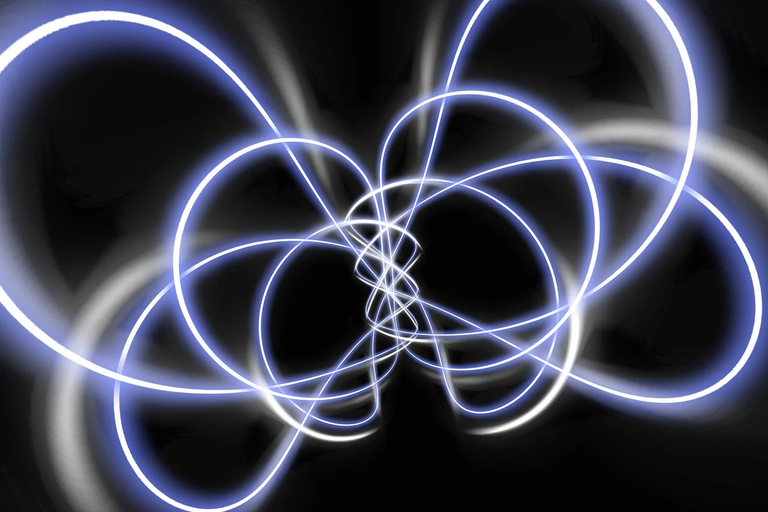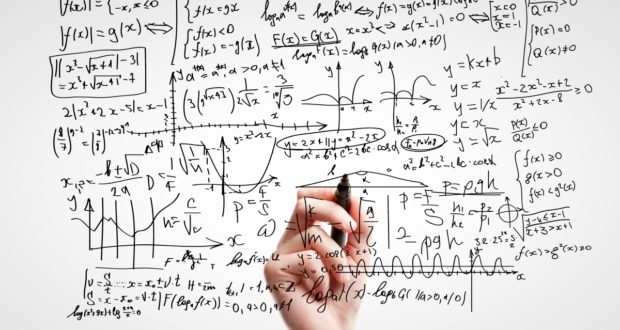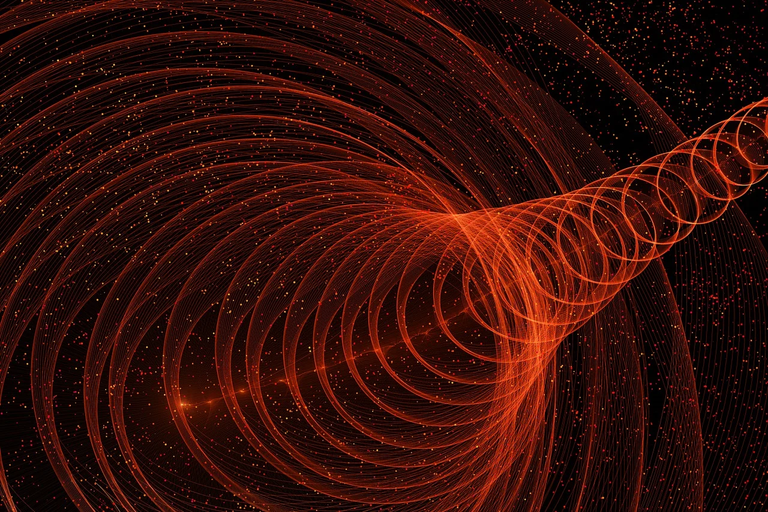
Any physical theory is always provisional, in the sense that it is only a hypothesis: it can never be proven. Although the results of experiments often agree with the theory, we can never be sure that the next time the result will not contradict it.
However, a theory can be rejected as soon as a single observation is found that contradicts its predictions.
As the philosopher of science Karl Popper has emphasized, a good theory is characterized by predicting a large number of results that in principle can be refuted or invalidated by observation.
Every time a new experiment is found to agree with predictions, the theory survives and our confidence in it increases. But if, on the other hand, a new observation is ever made that contradicts the theory, we will have to abandon it or modify it. Or at least this is what is supposed to happen, although one can always question the competence of the person who made the observation.
In practice, what happens is that a new theory is constructed that is actually an extension of the original theory. For example, tremendously precise observations of the planet Mercury reveal a small difference between its motion and the predictions of Newton's theory of gravity.
Einstein's theory of general relativity predicted a slightly different motion of Mercury than Newton's theory. The fact that Einstein's predictions fit observations, while Newton's did not, was one of the crucial confirmations of the new theory.
However, we continue to use Newton's theory for all practical purposes since the differences between his predictions and those of general relativity are very small in the situations that normally concern us. (Newton's theory also has the great advantage of being much simpler and more tractable than Einstein's!)

The ultimate goal of science is to provide a single that correctly describes the entire universe. However, the method that most scientists actually follow is to separate the problem into two parts.
First, there are the laws that tell us how the universe changes over time. (If we know what the universe is like at one instant, these simple physics will tell us what the universe will be like at any subsequent instant.) Second, there is the question of the initial state of the universe.
Some people believe that science should deal only with the first part: they consider the topic of the initial situation of the universe as the object of metaphysics or religion. They would argue that God, being omnipotent, could have started the universe any way he would have liked. Maybe so, but in that case he also made it evolve in a completely arbitrary way. Instead, it seems that he chose to make it evolve in a very regular way following certain laws. It is therefore equally reasonable to assume that there are also laws that govern the initial state.
It is very difficult to construct a single theory capable of describing the entire universe. Instead, we are forced, for the moment, to divide the problem into several parts, inventing a number of partial theories. Each of these partial theories describes and predicts a certain restricted class of observations, neglecting the effects of other quantities, or representing these by simple sets of numbers.
It may turn out that this approximation is completely wrong. If everything in the universe depends on absolutely everything else in it in a fundamental way, it may be impossible to get close to a complete solution by investigating isolated parts of the problem. However, this is certainly the way we have progressed in the past.
The classic example is again Newton's theory of gravity, which tells us that the gravitational force between two bodies depends only on a number associated with each body, its mass, being otherwise independent of the type of substance that forms the body. body. Thus, it is not necessary to have a theory of the structure and constitution of the Sun and the planets to be able to determine their orbits.

Cualquier teoría física es siempre provisional, en el sentido de que es sólo una hipótesis: nunca se puede probar. A pesar de que los resultados de los experimentos concuerden muchas veces con la teoría, nunca podremos estar seguros de que la próxima vez el resultado no vaya a contradecirla.
Sin embargo, se puede rechazar una teoría en cuanto se encuentre una única observación que contradiga sus predicciones.
Como ha subrayado el filósofo de la ciencia Karl Popper, una buena teoría está caracterizada por el hecho de predecir un gran número de resultados que en principio pueden ser refutados o invalidados por la observación.
Cada vez que se comprueba que un nuevo experimento está de acuerdo con las predicciones, la teoría sobrevive y nuestra confianza en ella aumenta. Pero si por el contrario se realiza alguna vez una nueva observación que contradiga la teoría, tendremos que abandonarla o modificarla. 0 al menos esto es lo que se supone que debe suceder, aunque uno siempre puede cuestionar la competencia de la persona que realizó la observación.
En la práctica, lo que sucede es que se construye una nueva teoría que en realidad es una extensión de la teoría original. Por ejemplo, observaciones tremendamente precisas del planeta Mercurio revelan una pequeña diferencia entre su movimiento y las predicciones de la teoría de la gravedad de Newton.
La teoría de la relatividad general de Einstein predecía un movimiento de Mercurio ligeramente distinto del de la teoría de Newton. El hecho de que las predicciones de Einstein se ajustaran a las observaciones, mientras que las de Newton no lo hacían, fue una de las confirmaciones cruciales de la nueva teoría.
Sin embargo, seguimos usando la teoría de Newton para todos los propósitos prácticos ya que las diferencias entre sus predicciones y las de la relatividad general son muy pequeñas en las situaciones que normalmente nos incumben. (¡La teoría de Newton también posee la gran ventaja de ser mucho más simple y manejable que la de Einstein!)
El objetivo final de la ciencia es el proporcionar una única que describa correctamente todo el universo. Sin embargo, el método que la mayoría de los científicos siguen en realidad es el de separar el problema en dos partes.
Primero, están las leyes que nos dicen cómo cambia el universo con el tiempo. (Si conocemos cómo es el universo en un instante dado, estas leves físicas nos dirán cómo será el universo en cualquier otro posterior.) Segundo, está la cuestión del estado inicial del universo.
Algunas personas creen que la ciencia se debería ocupar únicamente de la primera parte: consideran el tema de la situación inicial del universo como objeto de la metafísica o la religión. Ellos argumentarían que Dios, al ser omnipotente, podría haber iniciado el universo de la manera que más le hubiera gustado. Puede ser que sí, pero en ese caso él también haberlo hecho evolucionar de un modo totalmente arbitrario. En cambio, parece ser que eligió hacerlo evolucionar de una manera muy regular siguiendo ciertas leyes. Resulta, así pues, igualmente razonable suponer que también hay leyes que gobiernan el estado inicial.
Es muy difícil construir una única teoría capaz de describir todo el universo. En vez de ello, nos vemos forzados, de momento, a dividir el problema en varias partes, inventando un cierto número de teorías parciales. Cada una de estas teorías parciales describe y predice una cierta clase restringida de observaciones, despreciando los efectos de otras cantidades, o representando éstas por simples conjuntos de números.
Puede ocurrir que esta aproximación sea completamente errónea. Si todo en el universo depende de absolutamente todo el resto de él de una manera fundamental, podría resultar imposible acercarse a una solución completa investigando partes aisladas del problema. Sin embargo, este es ciertamente el modo en que hemos progresado en el pasado.
El ejemplo clásico es de nuevo la teoría de la gravedad de Newton, la cual nos dice que la fuerza gravitacional entre dos cuerpos depende únicamente de un número asociado a cada cuerpo, su masa, siendo por lo demás independiente del tipo de sustancia que forma el cuerpo. Así, no se necesita tener una teoría de la estructura y constitución del Sol y los planetas para poder determinar sus órbitas.

Initial image / Imagen Inicial: Pixabay by geralt.
Final image / Imagen final: Pixabay by geralt.
Y como siempre me despido de todos con un:
And as always I bid you all farewell with a:

Mis Blogs y Sitios Web / My Blogs & Websites:
- La Cucina di Susana.
- Cucinando con Susana
- El Mundo de los Postres
- Crónicas de Un Mundo en Conflicto.

Upvoted. Thank You for sending some of your rewards to @null. Get more BLURT:
@ mariuszkarowski/how-to-get-automatic-upvote-from-my-accounts@ blurtbooster/blurt-booster-introduction-rules-and-guidelines-1699999662965@ nalexadre/blurt-nexus-creating-an-affiliate-account-1700008765859@ kryptodenno - win BLURT POWER delegationNote: This bot will not vote on AI-generated content
Thanks!!